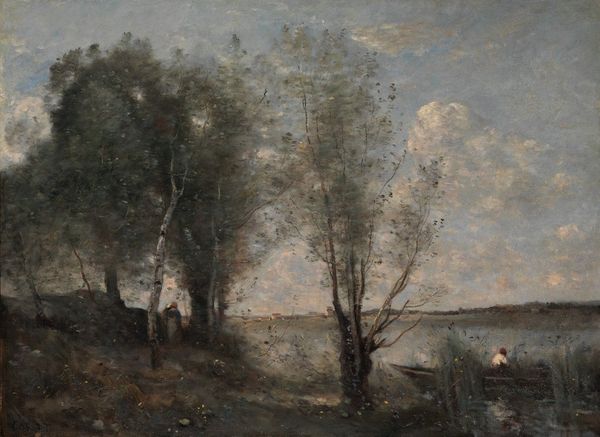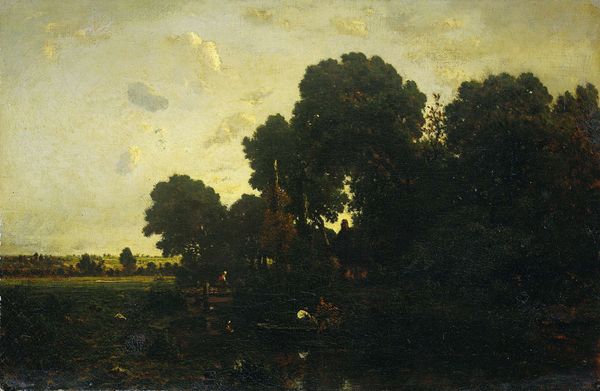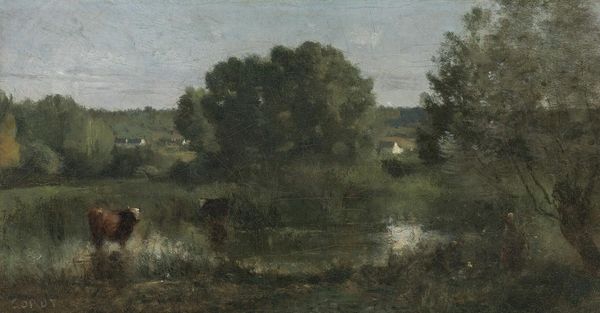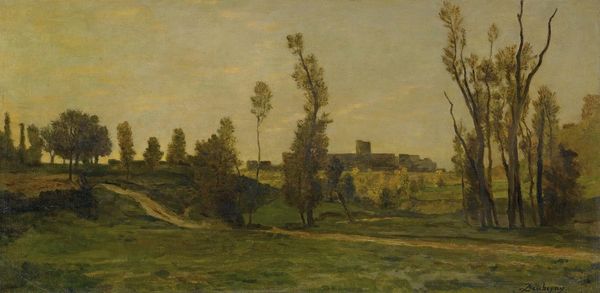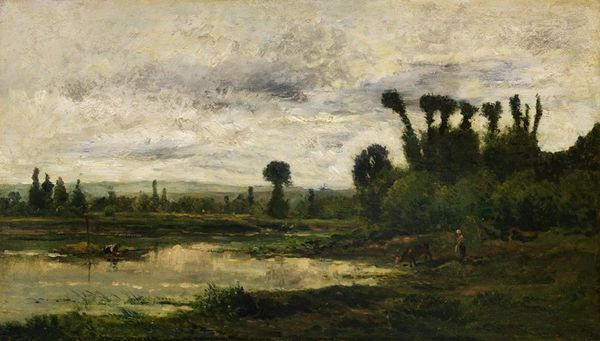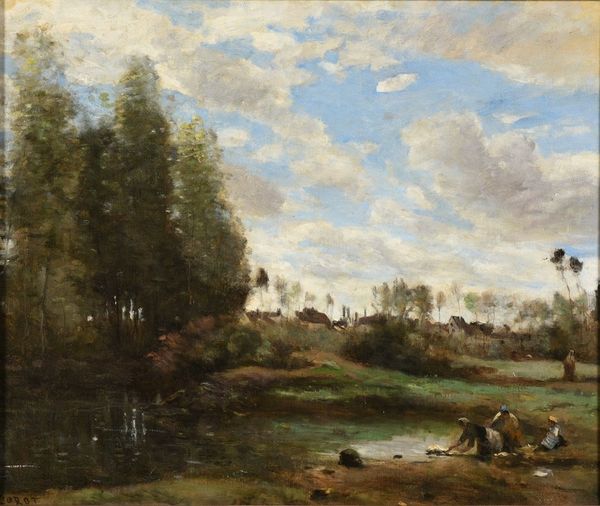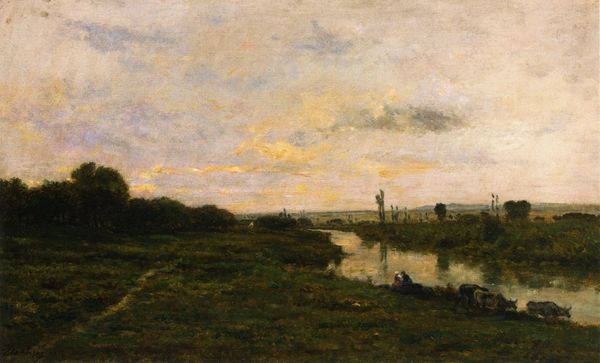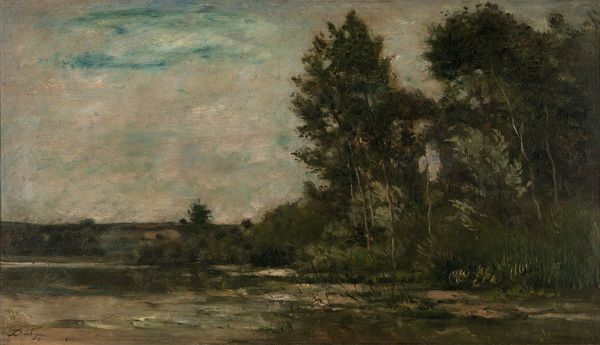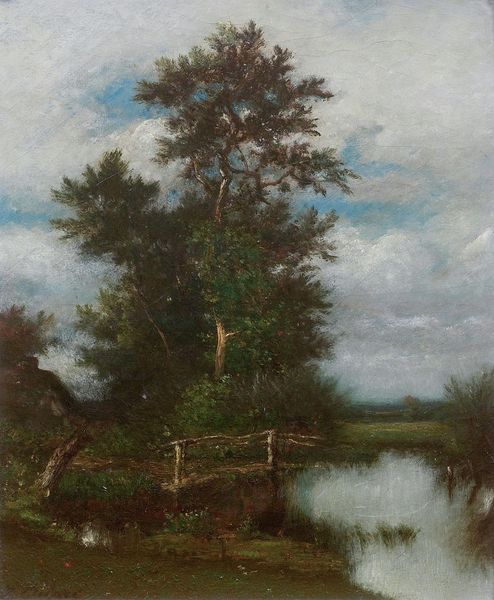
Copyright: Public Domain: Artvee
Camille Corot painted this landscape of Mortain in France with oils, some time in the mid-19th century. It presents a tranquil scene, with a boat on a pond, and a figure in the distance. Corot was working at a time when French landscape painting was caught between academic tradition, and the changing social conditions of the 19th century. He absorbed elements of both. On the one hand, his subdued palette and loose brushwork reflects the growing influence of naturalism. On the other, a painting like this offered the expanding middle classes a comforting view of the rural landscape. A painting like this is more than just a pretty picture. As historians, we need to understand the visual codes and cultural references that give it meaning. Archival research can tell us how the art market operated, and the tastes of the new middle-class audiences who visited the museums. Art always exists in a social and institutional context, and it is this that gives it meaning.
Comments
No comments
Be the first to comment and join the conversation on the ultimate creative platform.

